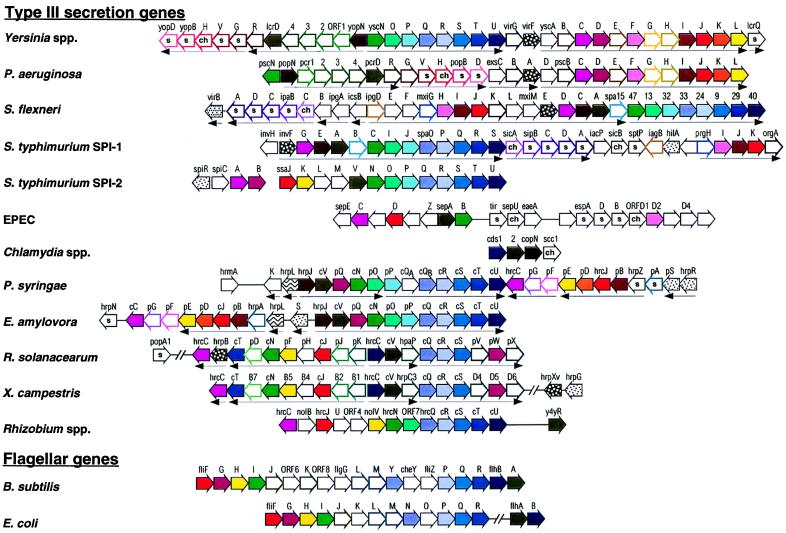FIG. 9.
Genetic organization of type III secretion systems and of flagellum biosynthesis genes from B. subtilis and E. coli. Homologies of encoded proteins are indicated by color code (see the text and Fig. 10). The type III secretion systems of animal and plant pathogens are grouped according to genetic similarities. Solid arrows indicate broadly conserved genes, while genes which are conserved only between subgroups are outlined by thicker, colored lines. A thin black outline indicates that no homolog of the respective gene has been identified so far. The filling patterns indicate genes which encode transcription factors (see the text and Table 3). A small s inside a gene symbol indicates secretion of the encoded protein, while the genes which encode chaperonic proteins are labeled ch. Transcriptional units are indicated by arrows underneath the genes where known (see the text for references). For the plant type III secretion systems, the hrc and hrp gene designations are sometimes replaced with c and p, respectively. The genetic maps are drawn according to the references given together with the respective proteins in Fig. 10. See the text for further details.

